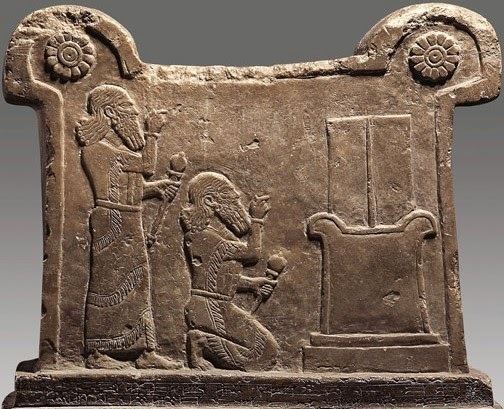 | ||
by
Damien F. Mackey
“One day, while [Sennacherib] was worshiping in the temple of his god Nisroch,
his sons Adrammelek and Sharezer killed him with the sword, and they escaped
to the land of Ararat. And Esarhaddon his son succeeded him as king”.
Isaiah 37:38
The god name rendered in the Hebrew as Nisroch (נִסְרֹךְ) is the Assyro-Babylonian fire-god, Nusku. This connection has been well explained by professor J. Dyneley Prince in his article, “Nisroch and Nusku” (JBL, Vol. 23, No. 1 (1904), pp. 68-75).
On. p. 68, the professor had noted: “There is no Assyrian or Babylonian deity Nisroch, but the consonantal elements of the word have led a number of its expositors to look for its equivalent in the name of the Assyrian fire-god Nusku ….
He then asked this question:
Was the Assyro-Babylonian god Nusku, whose name seems to resemble the Hebrew word “Nisroch,” a deity of sufficient importance in the Assyrian pantheon to justify this allusion to him in the Old Testament as being the god par excellence of the great Assyrian king Sennacherib …?
Things do not appear to be immediately favourable in this regard.
However, the professor does find that (on p. 69):
… the silence of the ancient Babylonian historical texts regarding Nusku, mentioned by Jastrow, is, I think, more than counterbalanced by the existence of the name of this god in certain votive texts from the ancient Cassite [Kassite] dynasty of Babylonia.
The professor’s examination of this god in relation to Sennacherib, though, will lead him to conclude that (pp. 72-73): “All this evidence seems to indicate that, although. Nusku undoubtedly occupied a well-defined position in both the. Babylonian and Assyrian pantheons, he was distinctly a subordinate deity in the later Assyrian divine hierarchy ….
On p. 73, he will make this suggestion: “It is much more likely that [“Nisroch”| is a very corrupt hybrid form from both the names Nusku and Ašur….
The professor’s conclusion on all of this being (p. 74):
I am strongly inclined to the view that the form נִסְרֹךְ crept into the original text of 2 K. 1937 = Is. 3738 by the hand of some copyist, who, possibly wishing to show his Assyriological knowledge and also to make the text complete, inserted the vague form נִסְרֹךְ which had descended to him from a confused mixture of tradition, embodying the well-known Ašur with the less known, but not unimportant, fire-god Nusku.
The fire-god Nusku, which Hildegard and Julius Lewy have brilliantly identified as the planet Mercury (“The God Nusku”): https://www.jstor.org/stable/pdf/43078841.pdf
Another dimension for Sargon II-Sennacherib: as Tukulti Ninurta I
of whom (Tukulti-Ninurta I) we have a depiction of him on his knees worshipping the very god Nusku (our “Nisroch”).
No comments:
Post a Comment